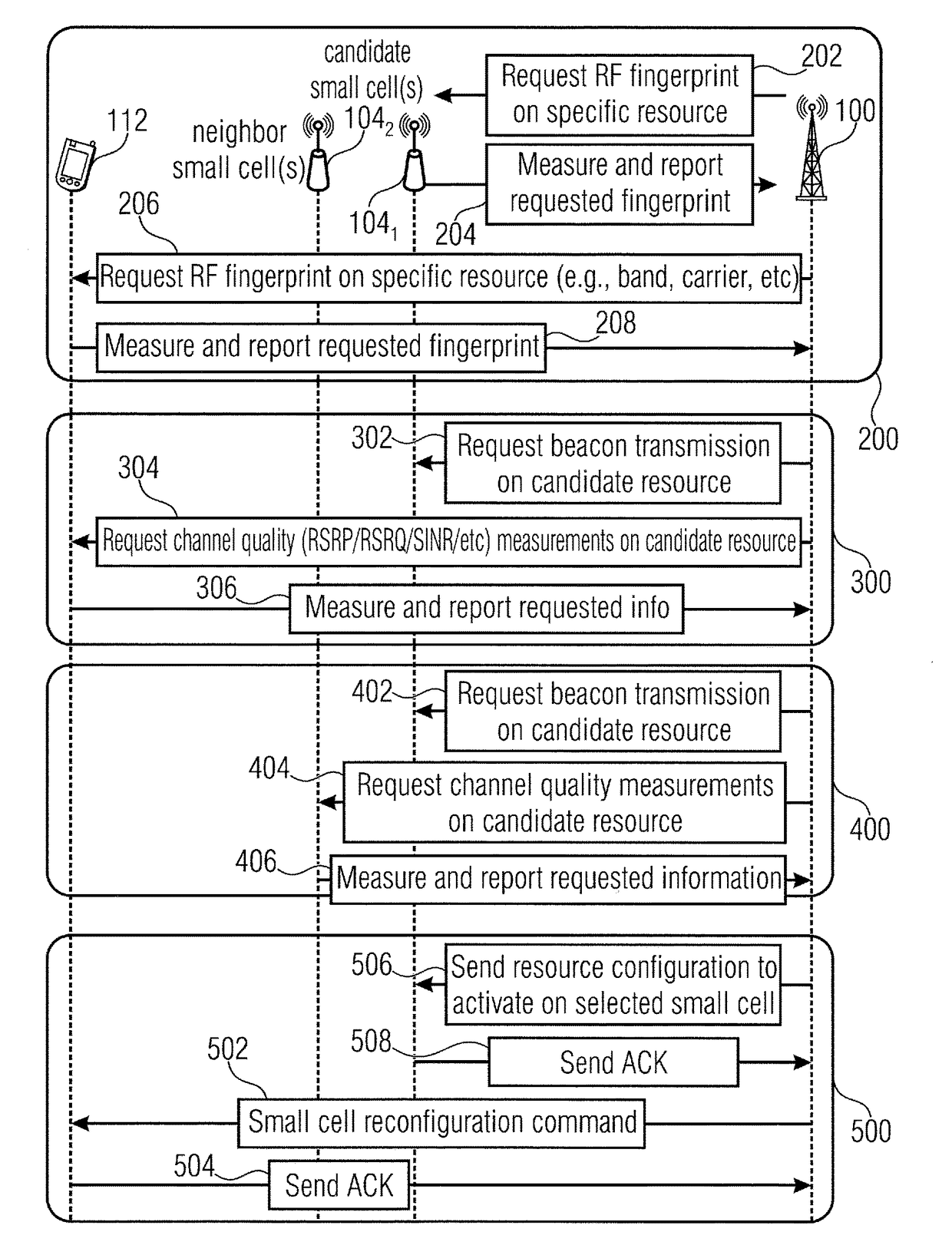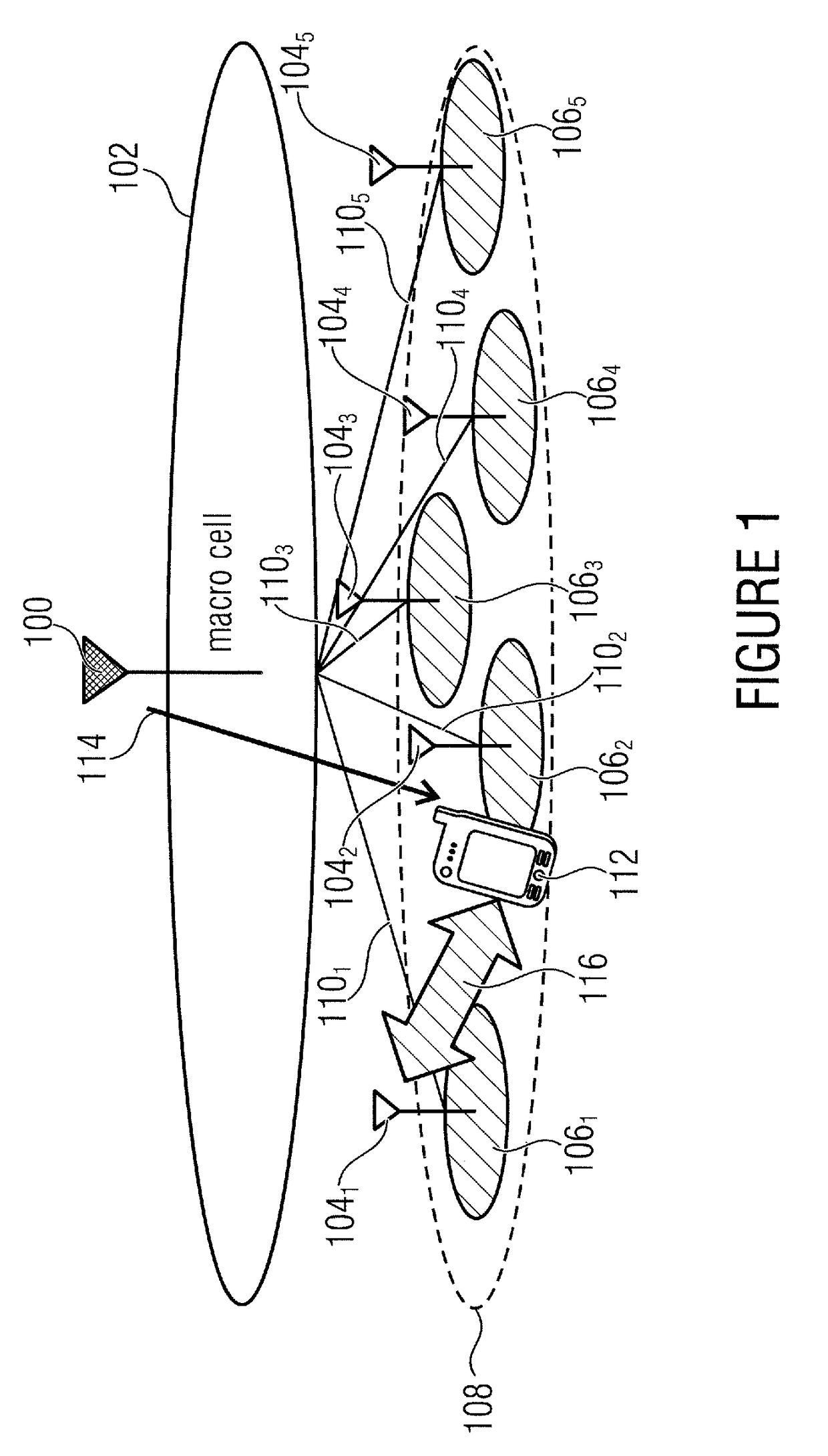Macro cell assisted small cell discovery and resource activation
a micro-cell and small cell technology, applied in the field of micro-cell assisted small cell discovery and resource activation, wireless communication systems, can solve the problems of low reliability of this process, small cell discovery, and the inability of us to discover sleeping cells, so as to improve the reliability of discovery, reduce search space, and optimize the use of resources
- Summary
- Abstract
- Description
- Claims
- Application Information
AI Technical Summary
Benefits of technology
Problems solved by technology
Method used
Image
Examples
Embodiment Construction
[0078]In the following, embodiments of the present invention will be described in further detail. It is noted that the four aspects of the present invention will be described in the following in a single environment making use of all four aspects, however it is noted that each of the four aspects may also be used independent of the other aspects.
[0079]FIG. 3 illustrates the signaling flow for a macro-cell assisted small cell discovery and resource activation in accordance with various embodiments. Embodiments of the invention concern the field of overlaid network architectures including a macro cell and a dense deployment of small cells which address high capacity demands in radio access networks. Energy saving functionality enables unused small cells to be put to sleep which is an aspect in terms of energy savings and interference management. The invention, in accordance with the various aspects described below, introduces a macro assisted mechanism to facilitate controlling small ...
PUM
 Login to View More
Login to View More Abstract
Description
Claims
Application Information
 Login to View More
Login to View More - R&D
- Intellectual Property
- Life Sciences
- Materials
- Tech Scout
- Unparalleled Data Quality
- Higher Quality Content
- 60% Fewer Hallucinations
Browse by: Latest US Patents, China's latest patents, Technical Efficacy Thesaurus, Application Domain, Technology Topic, Popular Technical Reports.
© 2025 PatSnap. All rights reserved.Legal|Privacy policy|Modern Slavery Act Transparency Statement|Sitemap|About US| Contact US: help@patsnap.com



